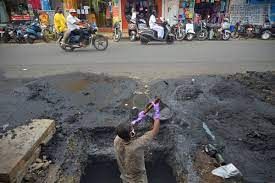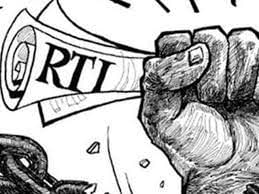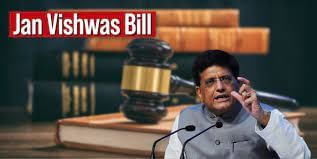UPSC Daily Current Affairs- 28th July 2023 | Current Affairs & Hindu Analysis: Daily, Weekly & Monthly PDF Download
GS-I
Tuvalu
Subject : Geography

Why in News?
Tuvalu is on the list of islands that are most likely to disappear into the ocean in the near future due to rising sea levels.
About Tuvalu:
- It was formerly called as the Ellice Islands.
- It’s an island country in the west-central Pacific Ocean, and sits around halfway between Hawaii and Australia.
- Capital: Funafuti
- Its neighbours include Kiribati, to the north, and Fiji, to the south.
- It is composed of nine small coral islands scattered in a chain lying approximately northwest to southeast
- Language: The Tuvaluans are Polynesian and they speak Tuvaluan language which is closely related to Samoan.
- Government
- The government is a parliamentary democracy with a unicameral legislature elected by universal adult suffrage.
- There are no political parties: the prime minister is chosen by and from the legislature.
- Tuvalu is a member of the South Pacific Forum.
- Economy
- Most people are subsistence farmers and are aided by remittances from relatives working overseas.
- A small quantity of copra is produced for export, the sale of stamps accounts for modest earnings, and fees are collected from foreign fishing fleets.
- Threats
- Due to its low-lying geography, Tuvalu is at acute risk from natural disasters, including rising storm surges, cyclones, and tsunamis.
Source: Times of India
530 districts reported free of Manual Scavenging: Centre
Subject: Indian Society

Why in News?
The Social Justice Ministry revealed that while 530 districts have reported themselves as manual scavenging-free, a significant number of districts are yet to do so.
- Despite the government’s assertion that manual scavenging-related deaths have not occurred in the last five years, fatalities during sewer and septic tank cleaning persist.
Manual Scavenging in India
- Manual scavenging is the practice of removing human excreta by hand from sewers or septic tanks.
- India banned the practice under the Prohibition of Employment as Manual Scavengers and their Rehabilitation Act, 2013 (PEMSR).
- The Act bans the use of any individual for manually cleaning, carrying, disposing of or otherwise handling in any manner, human excreta till its disposal.
- In 2013, the definition of manual scavengers was also broadened to include people employed to clean septic tanks, ditches, or railway tracks.
- The Act recognizes manual scavenging as a “dehumanizing practice,” and cites a need to “correct the historical injustice and indignity suffered by the manual scavengers.”
Reasons for its persistence
- Low Awareness and Marginalization: Manual scavenging is often carried out by marginalized sections of society who are unaware of their rights, making them vulnerable to exploitation.
- Enforcement Issues: Weak enforcement of the Act and the exploitation of unskilled laborers contribute to the persistence of manual scavenging.
- High Cost of Automation: The high cost of adopting automated cleaning methods in sewers is a deterrent for municipal authorities.
- Cheaper Availability of Unskilled Labor: Contractors resort to illegal employment of unskilled labourers who are willing to work at lower wages, perpetuating the practice.
- Caste Dynamics: The practice is reinforced by the existing caste hierarchy, with a majority of manual scavengers belonging to lower castes.
Various Policy Initiatives
- Prohibition of Employment as Manual Scavengers and their Rehabilitation (Amendment) Bill, 2020: The proposed amendment seeks to mechanize sewer cleaning, provide on-site protection, and offer compensation in case of sewer-related deaths.
- Prohibition of Employment as Manual Scavengers and their Rehabilitation Act, 2013: This Act goes beyond dry latrine prohibitions and outlaws all forms of manual excrement cleaning in insanitary latrines, open drains, or pits.
- Rashtriya Garima Abhiyan: The “Maila Mukti Yatra,” initiated in 2012, aims to eradicate manual scavenging nationwide, starting from Bhopal.
- Prevention of Atrocities Act: This Act serves as protection for sanitation workers, as a significant number of manual scavengers belong to the Scheduled Caste.
- Compensation: The PEMSR Act and the Supreme Court’s decision in the Safai Karamchari Andolan vs. Union of India case mandate compensation of Rs 10 lakh for victims’ families.
- National Commission for Safai Karamcharis (NCSK): Investigating the conditions of waste collectors in India, the NCSK provides recommendations to the government.
- Proper Distinction: The Ministry now recognizes the difference between sanitation work and manual scavenging.
- Enumeration of Sanitization Workers: The enumeration of sanitation workers will be conducted in 500 AMRUT cities as part of the National Action Plan for Mechanised Sanitation Ecosystem (NAMASTE).
- NAMASTE Scheme: The NAMASTE scheme aims to eliminate unsafe sewer and septic tank cleaning practices, enhancing the safety and dignity of sanitation workers.
States and UTs with Pending Declaration of Manual Scavenging-Free Districts
- Concerning Data: Jammu and Kashmir, Manipur, Telangana, Andhra Pradesh, West Bengal, and Jharkhand are among the States and UTs with the highest number of districts yet to declare themselves as manual scavenging-free.
- Disparity among States: While States like Bihar, Rajasthan, and Tamil Nadu have achieved 100% declaration of manual scavenging-free districts, several other States and UTs have reported only 15% to 20% of districts as free from the practice.
Way forward
- Regular surveys and social audits must be conducted against the involvement of manual scavengers by public and local authorities.
- There must be proper identification and capacity building of manual scavengers for alternate sources of livelihood.
- Creating awareness about the legal protection of manual scavengers is necessary.
Source: The Hindu
GS-II
UNESCO endorses Banning Smartphones from Schools
Subject: Governance

Why in News?
The UNESCO has released Global Education Monitoring (GEM) Report 2023.
- The report warned against the negative impacts of excessive screen time on children’s well-being and academic performance.
What is UNESCO? | |
| Full Name | United Nations Educational, Scientific and Cultural Organization |
| Established | November 16, 1945 |
| Headquarters | Paris, France |
| Director-General | Audrey Azoulay |
| Purpose | To promote peace and security through international cooperation in education, science, culture, and communication. |
| Functions | – Promoting education for all – Supporting scientific research – Safeguarding cultural heritage – Fostering freedom of expression – Promoting media development |
| Membership | Over 190 member states |
| World Heritage Sites | Over 1,100 designated sites worldwide |
| Languages | Official languages: Arabic, Chinese, English, French, Russian, Spanish Working languages: English, French |
About Global Education Monitoring Report 2023
- Established in 2002, the GEM Report is an editorially independent report, hosted and published by UNESCO.
- At the 2015 World Education Forum, it received a mandate from 160 governments to monitor and report on progress on education SDG 4.0.
- The report provides in-depth analysis and assessment of key education issues and challenges worldwide.
- It also offers evidence-based insights and policy recommendations to improve education systems and outcomes.
Concerns raised in the report
- Ills of digital learning: The report highlights that learning benefits diminish if technology is used excessively or without qualified teachers’ involvement.
- Equitable Learning: The report reveals that inequities in learning emerge when instruction becomes exclusively remote, affecting vulnerable students, especially in rural areas.
- Evidence-based Approach: The report urges for sound, impartial evidence on technology’s impact in education, as most available evidence originates from technology companies and may be biased.
- Long-term Costs and Sustainability: Countries need to consider the long-term costs of digital learning and connectivity. The expansion of the Edtech market should not overshadow unmet basic education needs.
- Threats posed by AI: The growth of generative AI and technology necessitates digital literacy and critical thinking skills.
- Protecting Children’s Rights: During the pandemic, many online education initiatives risked infringing on children’s rights.
Key endorsements: Banning smartphones in schools
- The report endorses banning smartphones in schools if technology integration does not improve learning or negatively affects student well-being.
- Research indicates that banning mobile phones from schools can lead to better academic performance, especially among low-performing students.
Source: The Hindu
Need for Political parties under RTI Act
Subject: Polity

Why in News?
The Supreme Court agreed to hold a detailed hearing on a bunch of petitions seeking to bring political parties under the ambit of Right to Information (RTI) Act.
About Political parties:
- A political party is a group of people who come together to contest elections and hold power in the government.
- They agree on some policies and programmes for the society with a view to promote the collective good.
- Election commission of India (EC) has categorised three kinds of political parties in the country: National, State/Regional and Registered/unrecognised Parties.
- Registration of Political parties is governed by the provisions of Section 29A of the Representation of the People Act, 1951.
- A party seeking registration under the said section with the commission has to apply to the commission within a period of 30 days following the date of its formation as per guidelines prescribed by the commission in exercise of the powers conferred by Article 324 of the Constitution of India and Section 29A of the Representation of the People Act, 1951.
Public Authority’ under Section 2(h) of the Right to Information Act, 2005
- It means any authority or body or institution of self-government established or constituted:
- By or under the Constitution,
- By any other law made by Parliament;
- By any other law made by State Legislature;
- By notification issued or order made by the appropriate Government
- It also includes any:
- Body owned, controlled or substantially financed;
- Non-Government Organisation substantially financed directly or indirectly by funds provided by the appropriate Government.
Arguments in favour:
- Except for the political strategy, other matters relating to finance and administration need to be made available to public because political parties are public institutions, receiving money from public.
- Electoral Bonds are not promoting transparency in political funding, as donors remain anonymous to public.
- In fact, not only funding but also expenditure made by political parties, especially during the time of elections should be made public.
- Political Parties are already under the RTI Act as they have not challenged the Central Information Commission’s verdict of 3rd June 2013 (Political Parties are public authorities under Section 2(h) of the RTI Act); though they have also not complied with the order yet.
- There is a section 8(1) in the act that has ten exemptions within it.
- If a political party comes under the ambit of RTI act, then this section will safeguard them from disclosing all types of information.
Challenges and concerns:
- Absence of law governing political parties: Political parties, unlike any other public or private institutions, are integral to the functioning of our democracy.
- They enjoy unique privileges. Despite their obvious crucial role in the past almost seven decades, lawmakers have not framed any regulation or law governing the functioning of political parties.
- The Law Commission of India’s report of 1999 also had detailed observations on the need for regulatory oversight on the functioning of parties.
- Misuse of RTI: The disclosure of information under RTI act may give advantage to the competitors of political parties.
- Reluctance of political parties: Political parties are reluctant to disclose their internal working as well as their decision-making system.
- It had argued that there were already provisions in the Income Tax Act, 1961, and Representation of the People Act, 1951, demanding “necessary transparency regarding financial aspects of political parties”.
- It said information about a political body was already in public domain on the website of the Election Commission.
Supreme Court’s observations:
- The Supreme Court said political parties may “have a point” in being concerned that bringing them under the ambit of the Right to Information (RTI) Act may lead to situations where they may be asked to disclose even details such as candidate selection or other deliberations.
Way Forward:
The declaration of political parties as public authority would promote transparency and encourage public debate. There are questions being raised on the functioning of political parties and the funds they receive. Political parties are an integral part of the democracy. Unless and until they are accountable to the public how can democracy succeed! Hence, there is a need to attain more transparency regarding the functioning of political parties.
Source: The Hindu
Jan Vishwas (Amendment of Provisions) Bill 2023
Subject: Polity

Why in News?
Among the Bills set to be taken up during the Monsoon Session of the Parliament, is the Jan Vishwas (Amendment of Provisions) Bill 2023.
About the Jan Vishwas (Amendment of Provisions) Bill 2023:
- It seeks to redefine the regulatory landscape of the country with decriminalisation of minor offences under 42 Acts to reduce compliance burden and promote ease of living and doing business in the country.
- It was tabled in Parliament by the Union Ministry of Commerce and Industry last year and later referred to a Joint Parliamentary Committee (JPC) for review.
- The JPC presented its report with recommendations to Parliament during the Budget Session.
- As per reports, most recommendations of the JPC have been approved by the Union Cabinet, clearing the way for its passing.
What does the Bill Propose?
- Decriminalising of 180 offences across 42 laws governing environment, agriculture, media, industry and trade, publication, etc.
- It seeks to completely remove or replace imprisonment clauses with monetary fines, to provide a boost to the business ecosystem and improve the well-being of the public.
- The Bill also proposes compounding of offences in some provisions.
- The Bill removes all offences and penalties under the Indian Post Office Act, 1898.
- Changes in grievance redressal mechanisms and the appointment of one or more Adjudicating Officers for determining penalties.
- A periodic revision of fines and penalties (an increase of 10% of the minimum amount every 3 years) for various offences in the specified Acts.
Some Key Laws Covered in the Draft Legislation:
- The Indian Forest Act, 1927
- The Air (Prevention and Control of Pollution) Act, 1981
- The Information Technology Act, 2000
- The Environment (Protection) Act, 1986
- The Copyright Act, 1957
- The Motor Vehicles Act, 1988
- The Railways Act, 1989
- The Cinematograph Act, 1952
- The Agricultural Produce (Grading & Marking) Act, 1937
- The Food Safety and Standards Act, 2006
- The High Denomination Bank Notes (Demonetisation) Act, 1978, etc.
What is the Need for such a Law?
- MSMEs are the backbone of the Indian economy and contribute significantly to the GDP.
- For these enterprises to make a shift to the formal sector and generate jobs and income, there must be effective and efficient business regulations in place that eliminate unnecessary red tape.
- Currently, there are 1,536 laws which translate into around 70,000 compliances that govern doing business in India.
- A 2022 report by the ORF on imprisonment clauses in business laws revealed that among the 69,233 unique compliances that regulate business in India, 26,134 have imprisonment clauses as a penalty for non-compliance.
- These excessive compliances have proved onerous for business enterprises, especially MSMEs, creating barriers to the smooth flow of ideas and the creation of jobs, wealth and GDP.
- Moreover, the lengthy processing times for the needed approvals can escalate costs and dampen the entrepreneurial spirit.
Significance of the Bill:
- Reducing compliance burden gives impetus to business process reengineering and improves ease of living of people.
- It would accelerate investment decisions due to smoother processes and attracting more investment.
- The Bill is also aimed at reducing judicial burden. As per the National Judicial Data Grid, out of a total of 4.4 crore pending cases, 3.3 crore cases are criminal proceedings.
- Settlement of a large number of issues, by compounding method, adjudication and administrative mechanism, without involving courts, will save time, energy and resources.
- To summarise, the Bill seeks to bolster ‘trust-based governance’.
Are There any Concerns w.r.t. the Bill?
- The monetary fines or penalties are not a good enough attempt at ‘decriminalisation’. Hence, the Bill undertakes ‘quasi-decriminalisation.’
- The blanket removal of imprisonment provision might also remove the deterrence effect of the environmental legislation, especially for large corporations profiteering from the offence.
- Adjudicating Officers may lack the technical competence necessary to decide all penalties under the Air (Prevention and Control of Pollution) Act, 1981 and the Environment (Protection) Act 1986.
- Many offences proposed to be removed in the Bill have nothing to do with its objective of decriminalisation to promote ease of doing business - like theft or misappropriation of postal articles.
Source: The Hindu
GS-III
INS Vikrant
Subject: Defence
Why in News?
A 19-year-old Naval sailor was recently found hanging onboard INS Vikrant.
About INS Vikrant:
- It is India’s first indigenously designed and manufactured aircraft carrier.
- The ship has been designed in-house by Indian Navy’s Warship Design Bureau and constructed by M/s Cochin Shipyard Limited.
- It will strengthen the country’s standing as a ‘Blue Water Navy’ — a maritime force with global reach and capability to operate over deep seas.
- With it, India also joins the elite group of nations – the US, Russia, France, the UK and China – who are capable of designing and constructing aircraft carriers.
- Features:
- Dimension: It has an approximate length of 262 meters (860 feet) and a breadth of 62 meters (203 feet).
- Displacement: Its full-load displacement is 43,000 tonnes.
- Propulsion: It is powered by four gas turbine engines.
- Speed: It has a top speed of 52 km/h (32 mph).
- Endurance: 8,600 miles (13,890 kilometres)
- Aircraft capacity: It can accommodate up to 30 fixed-wing aircraft, including fighter jets, and rotary-wing aircraft, such as anti-submarine warfare helicopters and utility helicopters.
Historical facts about INS Vikrant:
- INS Vikrant, with pennant number R11, was the first-ever aircraft carrier that was operated by the Indian Navy.
- The ship was officially laid down in 1943 and was being built for the Royal Navy as HMS (Her Majesty’s Ship) Hercules when the constitution was put on hold after World War II ended.
- Like many other ships at the time, the under-construction HMS Hercules was put up for sale by the United Kingdom and was purchased by India in 1957.
- The construction work was completed and the ship was commissioned in the Indian Navy as INS Vikrant in 1961.
- The plan for building an indigenous aircraft carrier started taking shape as the old INS Vikrant neared its decommissioning in the late 1990s.
Source: Hindustan Times
What is the Biodiversity Act? What changes has the Lok Sabha cleared in the law?
Subject: Environment

Why in News?
On July 25, the Lok Sabha gave its approval to a Bill to amend some provisions of the Biological Diversity Act of 2002.
Central Idea
- The Lok Sabha’s recent approval of the bill marks a significant step in preserving India’s biological diversity and promoting sustainable utilization. The bill aims to address concerns raised by central ministries, state governments, researchers, industries, and other stakeholders regarding the implementation of the 2002 Biological Diversity Act.
What is the Biodiversity Law?
- The Biodiversity Law, also known as the Biological Diversity Act of 2002, is a significant piece of legislation in India.
- Its main objective is to conserve the country’s biological diversity, which includes animals, plants, microorganisms, gene pools, and the ecosystems they inhabit.
- The law was enacted in response to the global need to protect and preserve biological resources, which were under threat due to human activities.
Key amendments proposed in the Biodiversity Law
- Exemption for Indian Systems of Medicine: Certain users of biological resources, like practitioners of Indian systems of medicine, are exempt from making payments to the Access and Benefit Sharing (ABS) mechanism.
- Treatment of Indian Companies with Foreign Equity: Companies registered in India and controlled by Indians are treated as Indian companies, even with foreign equity or partnership, reducing restrictions on their activities related to biological resources.
- Streamlining the Approval Process: Provisions have been included to expedite approval for research using biological resources and filing patent applications.
- Rationalization of Penalty Provisions: Penalties for wrongdoing by user agencies have been rationalized.
Significance of the Biodiversity Law
- Conservation of Biological Diversity: The Biodiversity Law is crucial for preserving the diverse range of animals, plants, microorganisms, and ecosystems found in India.
- Addressing Global Concerns: The law is a response to the global need to protect and conserve biological resources, which are under threat due to human activities. It aligns India with international efforts to safeguard biodiversity.
- Implementation of CBD Commitments: India agreed to the Convention on Biological Diversity (CBD) in 1994. The Biodiversity Law helps fulfill India’s commitments under this international framework agreement, promoting biodiversity conservation and sustainable use.
- Sustainable Resource Utilization: The law emphasizes the sustainable use of biological resources, ensuring that they are utilized in a manner that does not deplete them or harm the environment. This approach promotes responsible resource management.
- Supporting Traditional Systems of Medicine: The law recognizes the significance of traditional medicine systems like Ayurveda, Unani, and Siddha, which rely on medicinal plants and biological resources. It supports the conservation of these resources and traditional knowledge.
- Access and Benefit Sharing (ABS) Mechanism: The Biodiversity Law incorporates an Access and Benefit Sharing mechanism in alignment with the Nagoya Protocol. It ensures the equitable sharing of benefits arising from the utilization of genetic resources with local communities.
Factors behind the need for amendments
- Addressing Stakeholder Concerns: Over the years, various stakeholders, including practitioners of traditional medicine, the seed sector, pharmaceutical companies, and the research community, raised concerns about certain provisions in the original law.
- Supporting Traditional Systems of Medicine: One of the key reasons for the amendments was to encourage Indian systems of medicine, such as Ayurveda. The amendments sought to provide exemptions or favorable conditions for practitioners of traditional medicine to access and use these resources.
- Attracting Foreign Investment: By simplifying and streamlining processes, the government intended to make it easier for foreign entities to engage in research and business activities related to biodiversity in India.
- Promoting Research and Innovation: The amendments aimed to expedite the approval process for research involving biological resources and simplify procedures for filing patent applications.
- Rationalizing Penalty Provisions: The amendments likely involved rationalizing the penalty provisions for wrongdoing by user agencies. This was done to ensure that the penalties imposed for non-compliance with the law were fair and appropriate.
Way forward
- Integrated Policies: Develop and implement integrated policies that prioritize both biodiversity conservation and sustainable utilization. Ensure that economic development initiatives are aligned with environmental protection goals.
- Stakeholder Collaboration: Foster collaboration among government bodies, NGOs, industries, local communities, and researchers to jointly address biodiversity challenges and promote sustainable practices.
- Empower Local Communities: Empower local communities, especially indigenous groups, in biodiversity management and decision-making processes. Recognize their traditional knowledge and incentivize their involvement in conservation efforts.
- Conservation Reserves and Protected Areas: Strengthen and expand the network of conservation reserves and protected areas to safeguard critical ecosystems and habitats.
- Sustainable Resource Use: Promote sustainable practices in industries relying on biological resources, such as agriculture, pharmaceuticals, and biotechnology. Encourage eco-friendly and resource-efficient approaches.
- Green Business Practices: Encourage businesses to adopt green practices and environmental certifications, recognizing their commitment to sustainability.
- Education and Awareness: Raise public awareness about the importance of biodiversity, conservation, and sustainable resource utilization. Educate citizens about the benefits of preserving natural resources.
Conclusion
- The passage of the Biological Diversity (Amendment) Bill by the Lok Sabha reflects India’s commitment to preserving its rich biological diversity and promoting its sustainable use. As the bill advances to further stages of approval, it is essential to strike a balance between conservation and utilization, ensuring that future generations can benefit from the wealth of biological resources the country possesses.
Source: Indian Express
MERS-CoV
Subject: Science and Technology
Why in News?
Recently, Abu Dhabi reported a new case of Middle East Respiratory Syndrome Coronavirus (MERS-CoV).
About Middle East Respiratory Syndrome Coronavirus (MERS-CoV)
- It is a viral respiratory disease.
- Caused by: Middle East respiratory syndrome coronavirus (MERS‐CoV).
- It was first identified in Saudi Arabia in 2012.
- Fatality: Approximately 35% of MERS cases reported to WHO have died.
- MERS-CoV is a zoonotic virus.
- Zoonotic virus: it is transmitted between animals and people.
- Distribution: MERS-CoV has been identified and linked to human infections in dromedary camels in several Member States in the Middle East, Africa and South Asia.
Symptoms of MERS:-
- Fever
- Cough and
- Shortness of breath.
- Pneumonia is common.
- However, MERS patients may not always develop this condition.
- Gastrointestinal symptoms: such as diarrhea.
Transmission of MERS:-
- Human-to-human transmission is possible and has occurred predominantly among close contacts and in healthcare settings.
- Outside the healthcare setting, there has been limited human-to-human transmission.
Prevention and Treatment:-
- No vaccine or specific treatment is currently available.
- Treatment is supportive and based on the patient’s clinical condition.
Source: Indian Express
|
38 videos|5293 docs|1118 tests
|
















